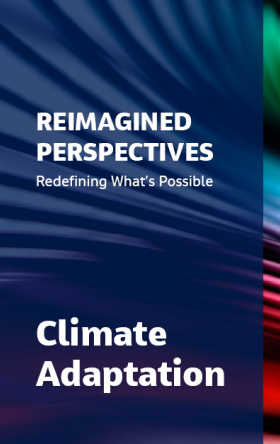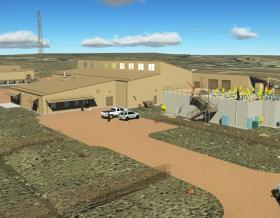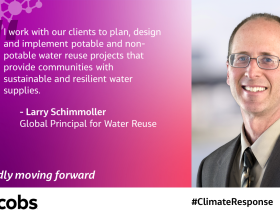Jacobs and The Nature Conservancy to Develop Nature-based Coastal Resilience Implementation Plans for South Carolina
Project with The Nature Conservancy will evaluate nature-based solutions along South Carolina’s coastline to reduce coastal community flood and erosion while enhancing coastal habitats and ecosystems.

Jacobs is working with The Nature Conservancy and South Carolina Office of Resilience to develop Nature-based Coastal Resilience Implementation Plans for South Carolina in the U.S.
The project is being funded by a $6.8 million National Oceanic and Atmospheric Administration (NOAA) Transformational Habitat Restoration and Coastal Resilience grant that was awarded to The Nature Conservancy and made available through the Infrastructure Investment and Jobs Act (IIJA).
Jacobs worked with The Nature Conservancy to secure the grant and is now contracted to develop three Nature-based coastal Resilience Implementation Plans. Each of the plans will cover a separate region of the South Carolina coast to account for differences in flood risk, coastline morphology, tidal regime and key stakeholders.
More than 1 million people live along South Carolina’s coastline and face a variety of weather- and climate-related hazards, including hurricanes, storm surge, marsh erosion and coastal flooding. The state has nearly 200 miles of coastline and half a million acres of salt marsh – more than any other Atlantic coast state.
Jacobs and The Nature Conservancy will lead a stakeholder-driven process to evaluate up to 60 large-scale and transformational nature-based solutions to reduce coastal flood risks and erosion while enhancing the natural environment. These include solutions such as salt marsh enhancement, habitat restoration and protection, living shorelines, oyster reefs and beneficial use of sediment.
The plans will also include identification of funding, partnership and permitting strategies, as well as project timelines and conceptual designs for three selected projects. The development of the plans will be conducted through a robust geodesign process and be supported by a public-facing web-based story map.
In 2023 the South Carolina Office of Resilience published a Strategic Statewide Resilience and Risk Reduction Plan that identifies major flood risksand resilience strategies for local governments to implement. The Nature-based Coastal Resilience Implementation Plans will build on that framework and explore how nature-based solutions can complement other strategies to support comprehensive coastal resilience solutions.
The project also builds on the experience Jacobs and The Nature Conservancy have developed working on large-scale coastal resilience plans for Tyndall Air Force Base and Pensacola East Bay oyster restoration in Florida.
Launched in May 2024, the planning process defines the plans’ objectives and develops equitable stakeholder engagement and communication strategies. Equity is an important project component and stakeholder engagement ensures that the solutions identified delivers equitable and impactful outcomes.
“Large-scale nature-based solutions, for hundreds of acres of saltmarsh and coastline, along with other traditional protection measures, are critical to moving the needle on flood risk reduction and achieving multiple environmental and community benefits,” says Jacobs Project Manager David Bell. “These comprehensive solutions require regional approaches and close stakeholder collaboration. We're excited to be facilitating that in South Carolina with the Office of Resilience and through our continued work with The Nature Conservancy.”
“Coastal resilience is a top priority for our clients along the Atlantic Seaboard in the U.S.” says Jacobs Senior Vice President Chrissy Thom. “Our work with The Nature Conservancy demonstrates the important role for nature-based solutions within comprehensive coastal resilience strategies that protect and enhance our communities and ecosystems.”
You might be interested in...
Future Foundations.
Co-creating the world to come

From developing climate resilience and transitioning to a low-carbon future, to modernizing and transforming infrastructure, governments and businesses face critical challenges. How they respond will define our future.
As our clients navigate these challenges, we help them think differently – working together to pioneer tomorrow's infrastructure solutions and build the foundations for a prosperous, secure future.












2c4e.jpg?h=c7c14dee&itok=FmPI2126)


















_0ac2b.jpg?h=8a6d63f3&itok=5vsqFiQH)









2747.png?h=1314d3d4&itok=rFs9mG95)














